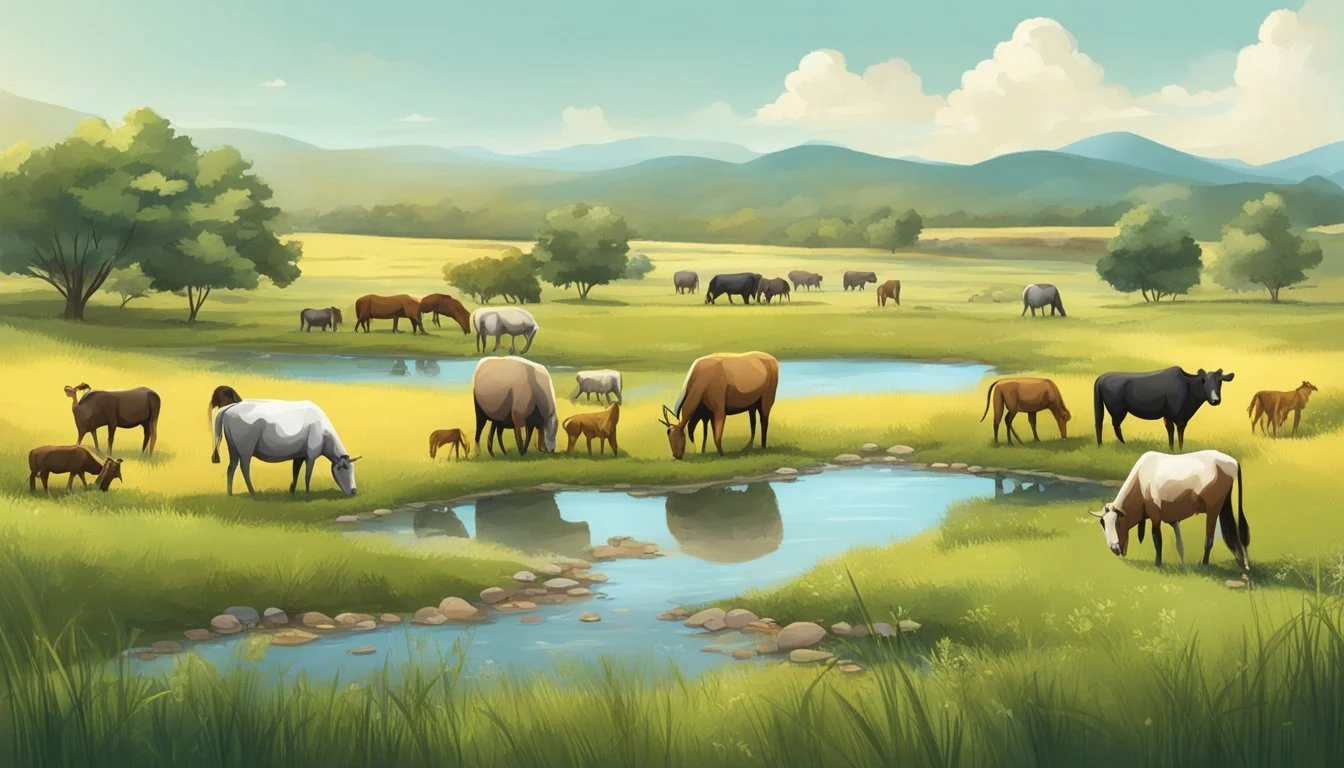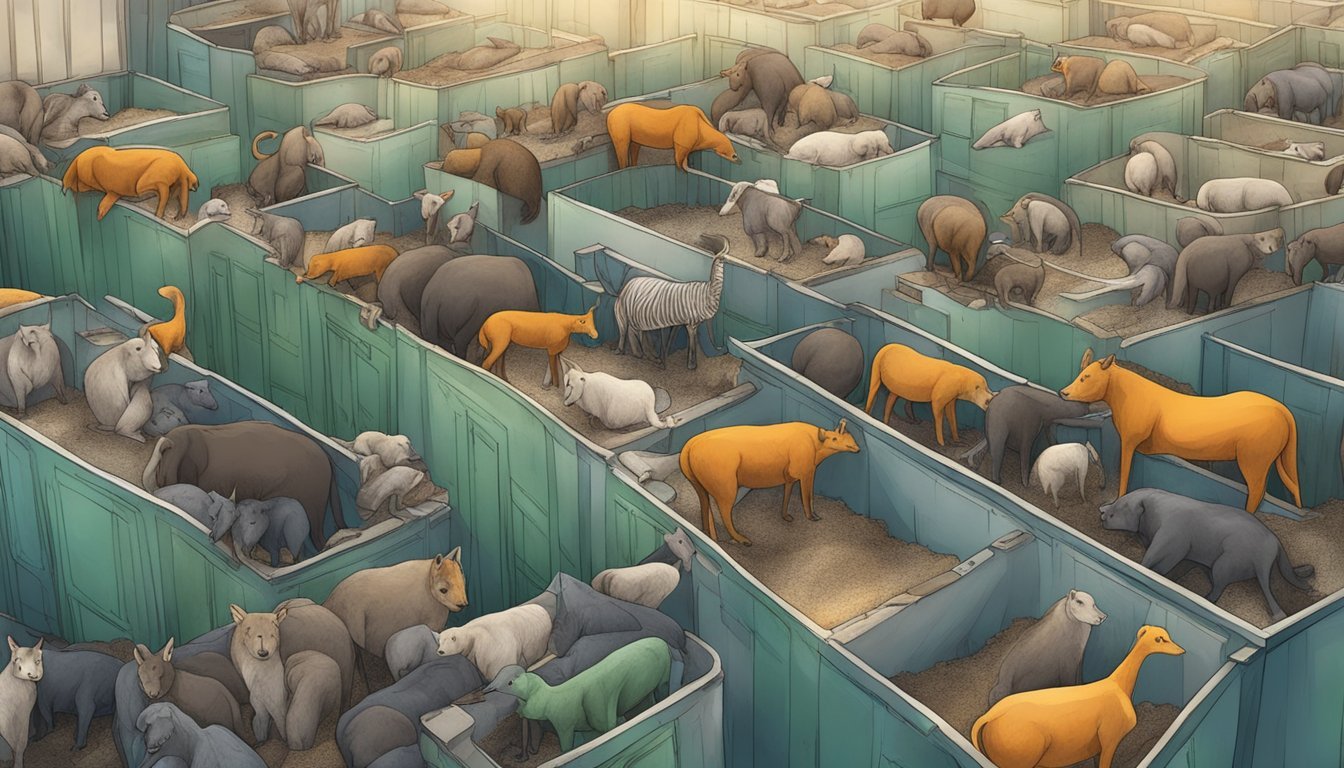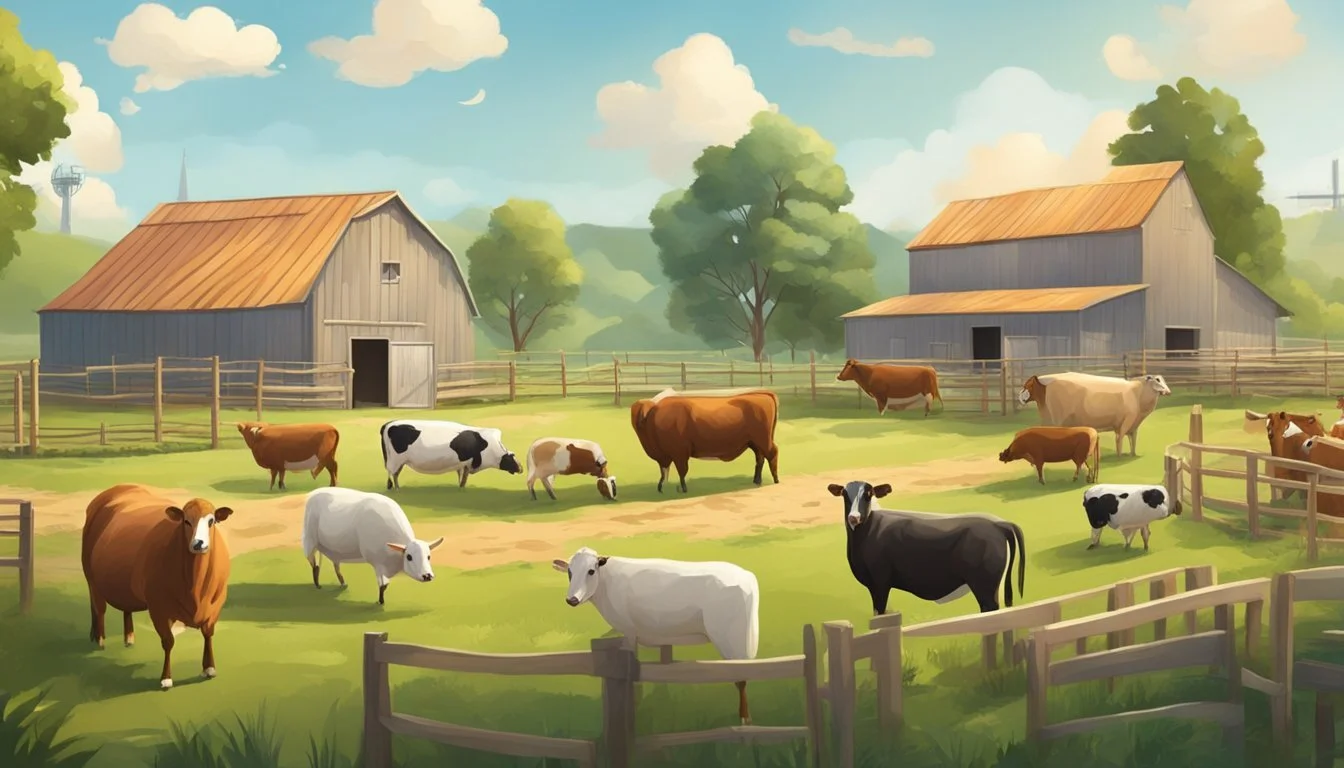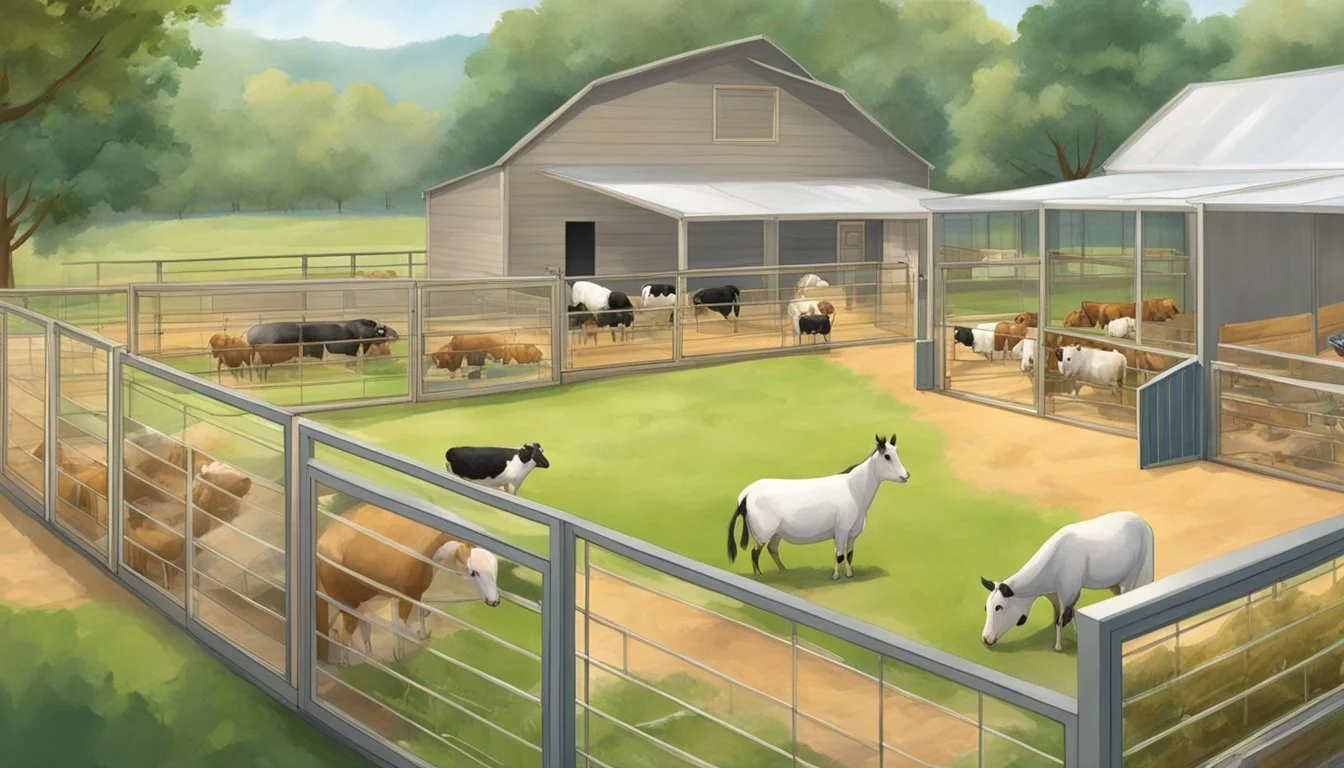The Basics of Farm Animal Welfare
Understanding Ethical Practices
Farm animal welfare encompasses the physical and mental well-being of animals reared for agricultural purposes—such as cows, pigs, chickens, and sheep. It is an essential aspect of animal husbandry, addressing how animals are cared for throughout their lives, including their living conditions, nutrition, health care, and humane handling. Ensuring good welfare not only demonstrates ethical responsibility but can also have a significant impact on the quality of products like meat, eggs, and dairy.
The concept of animal welfare is grounded in the understanding that animals are sentient beings capable of experiencing pain, suffering, and pleasure. As such, various frameworks, like the Five Freedoms of animal welfare, have been proposed to safeguard farm animals' needs, which call for freedom from hunger and thirst; discomfort; pain, injury, or disease; fear and distress; and the freedom to express normal behavior. These principles serve as guidelines for the treatment of animals in agricultural systems and inform policies and regulations aimed to uphold the standards of welfare across the industry.
Public concern about farm animal welfare has led to a growing interest in the methods of animal rearing, with a focus on shifting away from intensive farming practices and towards more sustainable and humane approaches. Consumers increasingly favor products that are certified as having been produced with high welfare standards, which has in turn encouraged many farmers and companies to invest in better animal welfare practices. These developments signal a recognition of the intrinsic value of animals and an acknowledgment of the interconnection between animal welfare, ethical consumption, and overall food quality.
Historical Context and Definitions
The journey of farm animal welfare is marked by evolving perspectives and scientific understanding. Initially viewed as mere commodities, farm animals are increasingly recognized as sentient beings deserving of ethical consideration.
Evolution of Farm Animal Welfare
The animal welfare movement has its roots in the 19th century when concerns about the treatment of farm animals began to emerge. As societies industrialized, the number of animals raised for human consumption increased, leading to intensive farming practices. This industrial approach often prioritized productivity over the wellbeing of animals, prompting public outcry and the initiation of the animal welfare movement.
One landmark development was the establishment of the Five Freedoms in the 1960s, a set of principles that outline ideal states of animal husbandry. These freedoms advocate for farm animals to have:
Freedom from hunger and thirst.
Freedom from discomfort.
Freedom from pain, injury, or disease.
Freedom to express normal behavior.
Freedom from fear and distress.
These principles have guided legislation, certifications, and best practices around the globe and continue to influence the field of farm animal welfare.
Defining Animal Welfare
Defining animal welfare involves acknowledging the complexities of animals' needs and experiences. It encompasses the health, behavior, and psychological state of animals. Recognizing farm animals as sentient beings, capable of experiencing pleasure and pain, has been central to shaping welfare definitions. Animal welfare can thus be understood through various metrics, including physiological indicators, behavioral patterns, and the assessment of mental states.
The Five Freedoms remain a cornerstone in the definition of animal welfare, providing a framework for evaluating and improving the lives of farm animals. They suggest that adequate animal welfare goes beyond basic survival, aiming for a state where animals are free from unnecessary suffering while experiencing good health and positive states.
Farm Animal Welfare Standards and Legislation
The establishment of farm animal welfare standards and corresponding legislation ensures that the rights and well-being of animals in agriculture are upheld. These frameworks guide farmers, businesses, and policymakers on acceptable husbandry practices and housing conditions.
International Standards
Internationally, farm animal welfare is governed by a set of guidelines that include the Five Provisions: freedom from hunger and thirst; freedom from discomfort; freedom from pain, injury, or disease; freedom to express normal behavior; and freedom from fear and stress. These guidelines are not legally binding, but they serve as a benchmark for legislation and influence policymakers globally.
National Legislation
In the United States, the primary piece of national legislation pertaining to farm animal welfare is the Animal Welfare Act (AWA). However, it should be noted that the AWA largely excludes animals raised for food. In response, individual states and consumer demand have led to various laws and initiatives to address the welfare of animals in factory farming. These state laws often provide more specific and stringent regulations compared to federal ones, aiming to fulfill the Five Provisions and mitigate the issues associated with intensive farming practices.
Ethical Concerns and Public Perception
As the conversation around farm animal welfare grows, emerging ethical issues and evolving public perceptions are central to understanding the collective concerns. They focus on the animals' capacities for cognition and emotion, public health implications, and consumer-driven change in food company practices.
Cognitive and Emotional Capacities of Farm Animals
Farm animals are increasingly acknowledged for their cognitive and emotional capacities, and this recognition fuels ethical concerns. Scientific research supports that creatures such as pigs, cows, and chickens experience complex feelings and social interactions. Awareness of these capacities has led many to question the morality of their confinement and treatment in industrial farming systems.
Factory Farms and Public Health
Factory farming, characterized by intensive animal rearing, has direct ties to public health concerns. Issues range from the spread of zoonotic diseases to the contribution of antibiotic resistance, which arises from the overuse of antibiotics in crowded conditions. Such concerns place public health at the center of debates on farm animal welfare.
Consumer Awareness and Food Companies
Americans are becoming more conscious of the origins of their food, a shift that reflects their concerns about animal suffering and cruelty. This awareness has led to increased scrutiny of food companies, with consumers demanding more ethical and transparent practices. Companies are responding with commitments to better welfare standards and the exploration of alternative proteins to meet changing preferences.
Animal Agriculture and The Environment
The nexus between animal agriculture and the environment is characterized by the significant impacts that livestock production has on ecological systems. These impacts are multifaceted, affecting land use, water resources, and greenhouse gas emissions.
Environmental Impact of Livestock Production
Land Use: Livestock production is one of the most expansive uses of land, leading to deforestation and habitat loss. It is estimated that grazing and growing feed crops for animals consumes about 30% of the Earth's land surface. The conversion of forests into agricultural land not only reduces biodiversity but also contributes to carbon emissions.
Water Usage: The water footprint of animal agriculture is substantial. For instance, producing a kilogram of beef requires thousands of liters of water, sourcing from both direct drinking water for animals and indirect water used to grow feed crops. This level of usage can lead to water scarcity in areas surrounding intensive farming operations.
Greenhouse Gases: Livestock are major producers of methane, a potent greenhouse gas with a global warming potential many times that of carbon dioxide over a 100-year period. The emissions from livestock contribute significantly to global warming and climate change.
Sustainable Farming Practices
Conservation Agriculture: Implementing conservation agriculture practices, such as minimal soil disturbance, crop rotation, and cover cropping, can reduce the environmental impact. These practices aim to support soil health, reduce erosion, and improve water retention.
Precision Farming: Precision farming uses technology to optimize field-level management concerning crop farming. When applied to animal agriculture, this can mean careful monitoring of feed efficiency and animal health to minimize waste and reduce environmental footprint.
Alternative Diets: Reducing reliance on animal products by incorporating plant-based diets can decrease the demand for livestock production. This transition would result in lower greenhouse gas emissions and a reduced strain on natural resources.
By understanding and addressing the environmental challenges of livestock production, stakeholders can adopt sustainable farming practices that mitigate ecological impacts and contribute to the preservation of the environment for future generations.
Animal Welfare Science and Research
Animal Welfare Science provides a structured approach to understanding and enhancing the lives of farm animals through rigorous research and methodology. Research in this field aims to assess and improve farm animal welfare, blending multidisciplinary knowledge to innovate and refine welfare standards.
Assessment Methods
Assessment frameworks in animal welfare science are essential to ensure systematic and objective analysis. They typically include behavioral, physiological, and health indicators. Behavioral assessments may involve observing social interactions and locomotion, while physiological measures might look at stress hormones. The science of animal welfare assessment has evolved from simple measures towards more comprehensive frameworks that can provide a holistic view of an animal's well-being.
Improving Welfare Through Science
The research in farm animal welfare goes beyond observation; it seeks to establish practical interventions. Enhancements in housing, nutrition, and veterinary care stem from such studies. Studies often explore innovative housing solutions that align more closely with an animal's natural behaviors, even though not all natural behaviors are indicative of good welfare. For instance, modifications in housing and husbandry practices are often recommended based on findings from welfare research to reduce environmental stress and promote positive states in farm animals.
Welfare Issues in Current Practices
The welfare of farm animals in modern agricultural practices is often compromised due to restrictive housing systems and procedures performed without pain mitigation. Two major areas of concern include the manner in which animals are confined and the manner in which they undergo certain interventions.
Confinement and Housing Systems
Many farm animals face life in confinement systems like battery cages for egg-laying hens or crates for pregnant sows. These environments severely restrict animals' movement, often to the extent that they cannot turn around or express natural behaviors. For instance, the use of battery cages results in severe space limitations, leading to a range of welfare issues such as physical ailments, stress, and aggressive interactions among animals.
Mutilations and Medical Treatments
Routine procedures such as docking (the removal of parts of an animal’s tail), beak trimming in poultry, and castration of livestock are common in the industry. Many of these procedures are conducted without anesthesia or analgesics, causing pain and suffering. Although intended to prevent injury or to manage unwanted behaviors, such practices raise ethical questions about the balance between economic efficiency and animal welfare.
Advocacy and Intervention Strategies
In the realm of farm animal welfare, advocacy and intervention strategies are crucial for driving change. These approaches can vary broadly in method and scope, all aiming to improve the treatment of farm animals on a systemic level.
Role of Nonprofits and Advocacy Groups
Nonprofit organizations and advocacy groups, such as the Humane Society of the United States, play a pivotal role in advancing farm animal welfare. They engage in various activities, including education, legal and policy advocacy, and public communications. Through these efforts, they work to reshape society's views and behaviors toward farm animals and stimulate systemic change.
Campaigns and Funding
Campaigns by advocacy groups often require substantial funding to be effective. They might focus on specific issues, such as ending the use of battery cages in egg production, and they can take the form of public awareness campaigns, corporate outreach, or promoting humane farming practices. The success of these campaigns hinges on solid fundraising strategies, which can involve grants, individual donations, or lobbying for government support.
Legislative and Market-Driven Changes
Efforts to improve farm animal welfare also manifest through legislative changes and market-driven adjustments. Legislative advocacy works toward setting and improving legal standards for animal welfare. Simultaneously, market-driven changes are facilitated by working directly with food companies to commit to higher welfare standards, thus influencing supply chains to become more humane. Both strategies rely on a mixture of legal savvy, economic rationale, and public pressure to reform industry practices toward better treatment of farm animals.
Alternatives and Solutions
Exploring alternatives to conventional animal products is crucial in addressing farm animal welfare concerns. The development and adoption of alternatives provide solutions for consumers who prioritize animal welfare and aim to make ethical choices within their dietary habits.
Higher Welfare Animal Products
Certifications and Standards: Consumers seeking animal products from sources with higher welfare standards can look for certifications such as Animal Welfare Approved or Certified Humane. These labels ensure that animals are raised in environments that cater to their physical and psychological well-being.
Higher Categorization: There's a categorization that ranks products from 'conventional' to 'organic', 'free-range', or 'pasture-raised', each offering progression in welfare conditions. The meat industry is also seeing a shift with some farmers transitioning to less intensive, high-welfare farming methods to meet consumer demand.
Plant-Based and Lab-Grown Alternatives
Plant-Based Options: The market for plant-based products has expanded rapidly, giving consumers plenty of alternatives that mimic the taste and texture of animal meat without the associated welfare concerns. Products ranging from plant-based burgers to dairy alternatives are gaining popularity.
Lab-Grown Meat: A groundbreaking development in ethical alternatives is lab-grown or cultured meat, which is created from animal cells without the need for raising and slaughtering animals. This innovation has the potential to transform the meat industry by offering meat products with minimal animal welfare impacts.
Future Directions in Farm Animal Welfare
The burgeoning field of farm animal welfare is rapidly advancing, with cutting-edge innovations in technology and shifts in consumer preferences playing pivotal roles in shaping its trajectory.
Innovations in Farming Technology
In recent years, technology has become an indispensable tool in promoting humane practices and increasing transparency in farm animal welfare. For instance, precision livestock farming employs sensors and data analytics to monitor the health and well-being of farm animals, ensuring they are productive while being treated ethically. These technologies not only automate the monitoring process but also enable farmers to make informed decisions about care and management.
Farmers are now exploring robotic systems that feed and milk animals, which can reduce the stress caused by human interaction and provide more consistent care. Innovations such as smart collars and GPS tracking also offer insights into the natural behaviors and needs of nonhuman animals, allowing for improved welfare conditions that align more closely with each species’ intrinsic behaviors.
Evolving Consumer Preferences
Consumers increasingly seek assurances that the products they purchase are sourced from farms that prioritize animal welfare. This shift is motivating the industry to adopt more humane and transparent practices in animal husbandry.
The demand for welfare-friendly products is fostering the implementation of higher welfare standards and the development of welfare certification schemes. These certifications are becoming more prevalent on product packaging, giving consumers the ability to make informed choices that reflect their values. The push for clearer labelling is also encouraging producers to reconsider their animal welfare policies, as consumers are willing to pay a premium for products that guarantee ethical treatment of farm animals.
This consumer-driven movement not only benefits the animals but also can lead to higher-quality products, as stress can impact the physical condition and, ultimately, the meat, milk, or eggs produced. As a result, there is a positive feedback loop where welfare improvements lead to better quality, which in turn drives further consumer interest in humane products.








